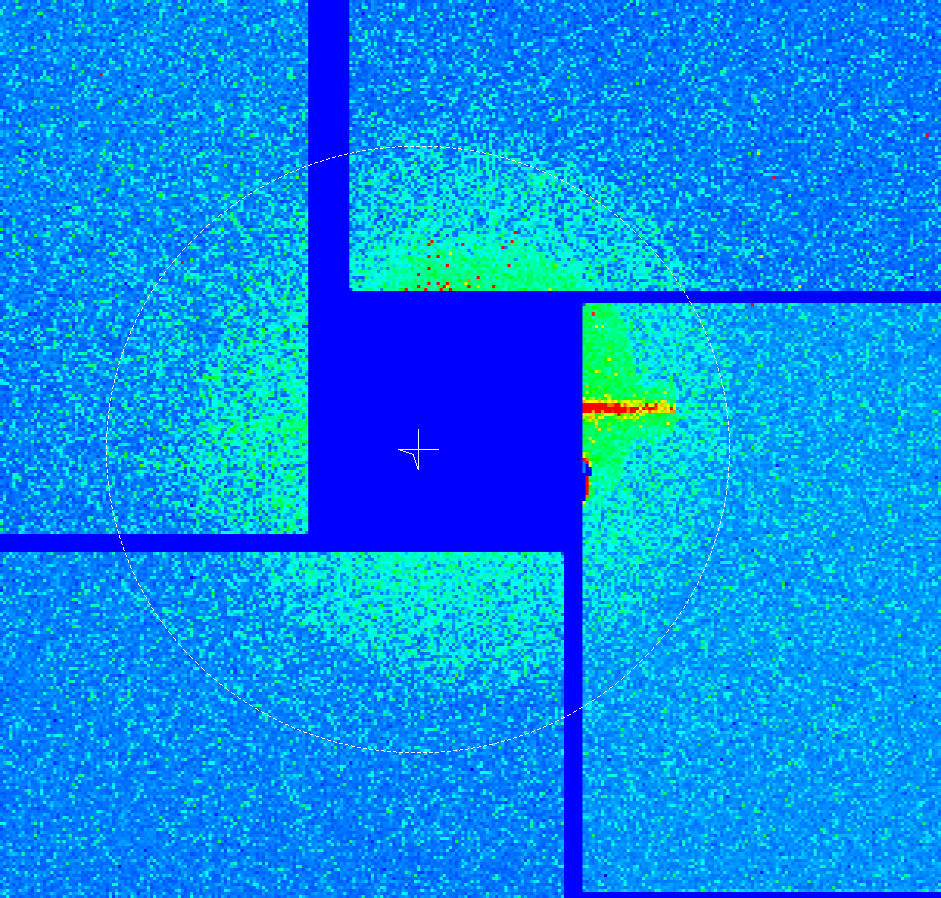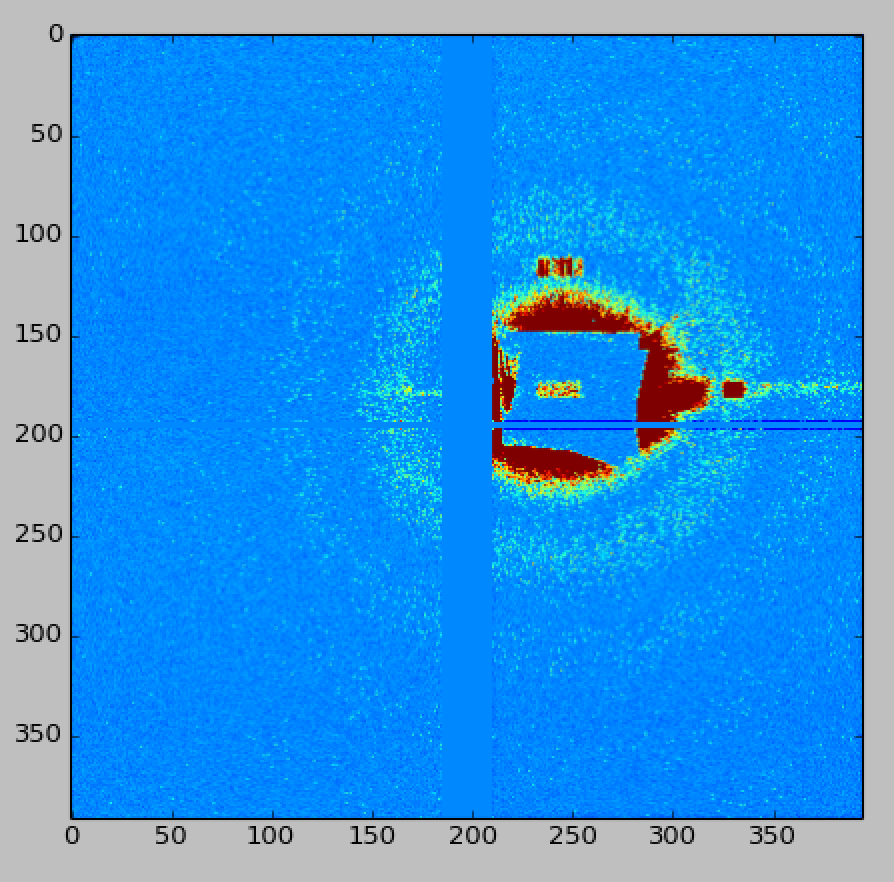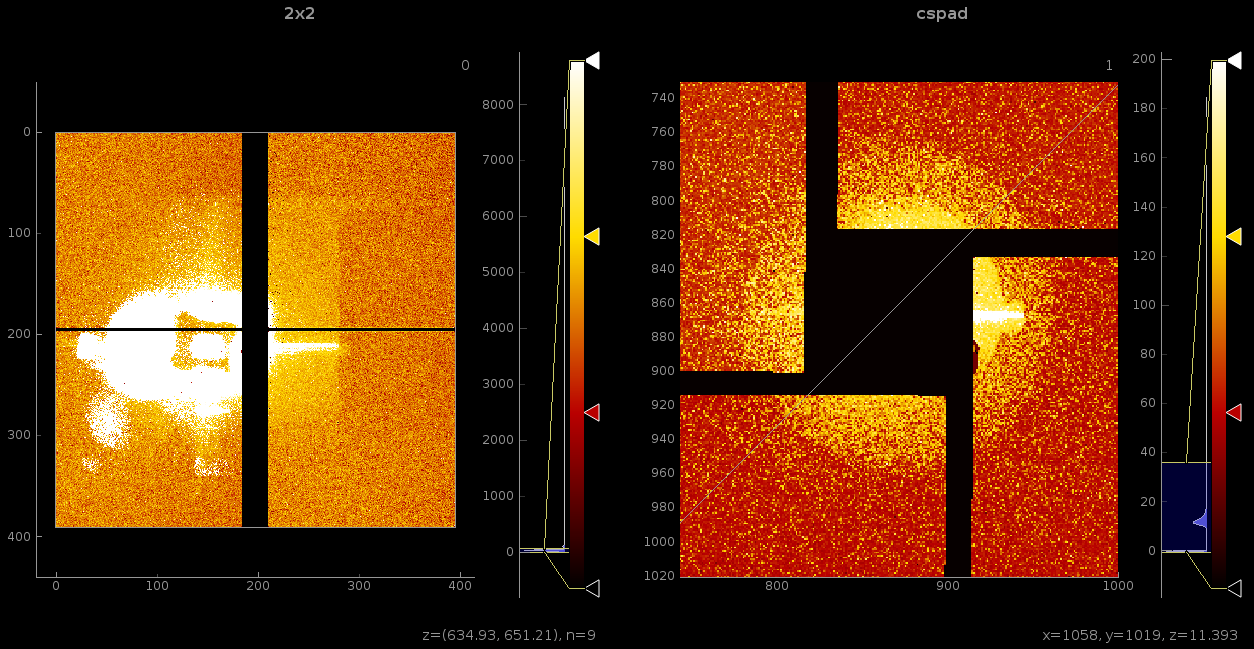Data for alignment: exp=cxi86715:run=112
EventKey(type=Psana::CsPad2x2::ElementV1, src=DetInfo(CxiDg2.0:Cspad2x2.0), alias="Dg2CsPad2x2") EventKey(type=Psana::CsPad::DataV2, src=DetInfo(CxiDs2.0:Cspad.0), alias="DsaCsPad")
- It looks like CSPAD geometry has an offset relative to the beam center
- If chosen orientation is correct, based on vertical pattern seen on CSPAD2x2 the distance between strike and barely visible 2x1 boarder is 146pix in CSPAD2x2 and 41 in CSPAD, that gives scale factor 3.56.
- then CSPAD2x2 (x,y) position can be adjusted relative to CSPAD.
- CSPAD2x2 geometry file
- we think the relative orientation of cspad2x2 and big cspad is correct because of the "bulb" on the right side of both the above images, but this is not 100% robust.
Update, July 23 2015
- We created geometry files for both cspad2x2 and cspad using TJ's psgeom converters from the crystfel .geom files
- The z-position of the cspad was determined by the crystfel geoptimiser. This also places the sample position at the origin.
- The z-position of the cspad2x2 was measured by Andy Aquila with a tape measure to be 2.4m +- few mm.
- The origin of the cspad2x2 was set by looking at the rings in one of the "good hit" events provided by the uppsala group (image below)
- We then looked at the picture of both detectors below.
- Andy said for the cspad2x2 up is toward the left. At LCLS "up" corresponds to positive-y, so this should go to the right.
- Given that the cspad has positive-y toward the right we need to rotate the cspad2x2 by 180 degrees. A flip would be incorrect, because it would change the "handedness" of the big cspad shadow seen on the little cspad
- The above 180 degree rotation is consistent with Andy's picture that the cspad2x2 streak going towards the left corresponds to the cspad bright streak going toward the right.
- cpo noticed that the shadow gap between the two 2x1's is about the same size on both pictures. this implies the shadow is not being created by a point at the sample position (if that was true the back image would be 4 times as large as the front). Andy confirmed that this was likely a diamond window 1 or 2 meters upstream from the sample that was glowing.
Image used to determine that we needed to rotate cspad2x2 by 180 degrees around z:
Rings used to set x/y origin of cspad2x2 coordinate frame (location of sample):
After rotating the cspad2x2 by 180 degrees around z we obtain the following "final" images:
geometry file for cspad2x2 rotated by 180 degrees
geometry-cspad2x2-from-cheetah-z-rot180.data
Overview
Content Tools





